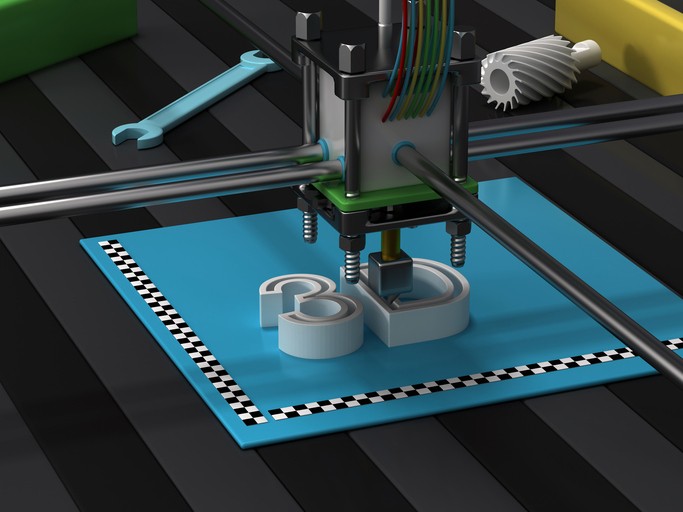![Please don’t add a tiny hyphen to this print. [Image: cosinart/Getty Images]](https://fabbaloo.com/wp-content/uploads/2020/05/3D_img_5eb0a5d5c9742.jpg)
“3D printing” is a part of Industry 4.0; let’s see “3-D printing” or “3D-printing” make their way out of the lexicon.
I love language. The written word especially. I’ve often said I’ve built my life on words, or that while I may trip on my tongue in conversation, give me a pen and I’m golden. It was no surprise to anyone who knew me when at 19 I declared my English major, nor when at 21 I graduated summa cum laude with that degree. If anything, it’s a surprise now that I make my living in the editorial world, answering that age-old (or at least Avenue Q-old) question: “What do you do with a BA in English?”
Words are my jam. Formal, colloquial, conversational: different uses for different occasions. Learning Spanish taught me more about the English language than I had ever learned in grammar school about structures. Working in technical environments my entire adult life, from a manufacturing company to the floor of IMTS, has taught me the necessity of clarity in language when it comes to these applications. I’ve often described my expertise as being in knowing the experts — and then translating ‘engineer’ to ‘reader’ to convey the latest in additive manufacturing.
All that said, I’d like to take a stance.
As we’re seeing 3D printing come into more production environments, into more manufacturing workflows, we’re seeing standards and regulations come into play. Standardization is important in not only the way things are made, but in the way that we share information about those things that are being made (and doing the making).
Let’s please stop hyphenating “3D printing”.
We’re living in the age of Google, of hashtags, of SEO, of clarity in typing the right things in the right order. Once “the best words in their best order” was a descriptor for poetry, as Samuel Taylor Coleridge put it; now, that sentiment may be better applied to a search engine. Some are ‘smart’ enough to show results for “3D printing”, “3-D printing”, and “3D-printing” together, but sometimes that differentiation of hyphenation is a real sticking point.
Yes, it stands for the appropriately-hyphenated “three-dimensional”, and Merriam-Webster stands by 3-D (while Oxford and Wikipedia start with 3D and show “also 3-D”). Yes, several high-profile educational institutions hyphenate. Still — I disagree. I find that hyphenation clunky, distracting, and outdated.
Language changes, it grows up, and it adapts to new eras; ask any high schooler who bemoans assignments to read Shakespeare. Ask my English major advisor, who loved to slip into actual Old English from time to time (if you’ve never heard or read Old English, don’t let the “English” in its name fool you, it’s barely similar).
For about a decade, I worked each summer at a medieval faire, first as a cast member, then as part of the entertainment directing team. My specialty? Teaching period language to cast members, ensuring that every “thee” and “thou” was appropriately used (and never in addressing royalty, who must always be the more formal “you”). The other specialty for the directing staff? Helping everyone get out of dialect and back into the 21st century. Because it’s different.
Merriam-Webster pegs the first use of “3-D” as happening in 1951. We started talking about “rapid prototyping” in the 1980s as stereolithography and the origins of what would become 3D printing saw the first progress and patents. We tend to use “additive manufacturing” more than “rapid prototyping” now, because the technology and its applications have grown up, and so too has the nomenclature.
We can also look to the company names; we hear from 3D Systems and 3D Platform, not 3-D. HP’s Multi Jet Fusion and Metal Jet technologies come from its 3D Printing business, not its 3D-Printing business. Industry participants themselves tend to drop the hyphen. Let’s take that cue for talking about the industry.
“3D printing” — however you style it — has worked effectively synonymously with both “rapid prototyping” and “additive manufacturing” and that particular debate will continue to rage. (Are they different? How are they different? Is 3D printing part of additive manufacturing and part of rapid prototyping? Are the terms interchangeable?) For today, that’s not what I’m talking about here, but a much simpler ask.
Let’s keep talking about 3D printing. It’s clearer, it seems to already be the most prevalent structuring, and it’s time to standardize. Just say no to (this particular) hyphenation.











No one seems to offer collaborative 3D printing modes on dual extrusion devices. We explain why this is the case.